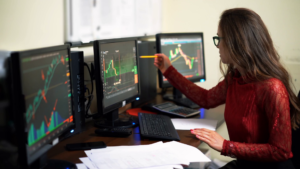Forex spreads are not static. They shift constantly, and while most traders think of them as broker-controlled, there are actually multiple forces behind every tiny fluctuation. Understanding what drives spreads gives you control. More importantly, it gives you a clear pathway to trading with the best Forex spreads not just once, but consistently.
Let’s explore the top factors that affect your spreads and how to stay one step ahead.
1. Market liquidity and trading volume
The more traders involved in a currency pair at any given time, the tighter the spread. This is why major pairs like EUR/USD and USD/JPY usually have low spreads. They are traded in massive volumes and have deep liquidity.
If you’re trading during a busy market window such as when the London and New York sessions overlap, you are more likely to get the best Forex spreads across multiple pairs. During holidays, weekends, or off-hours, liquidity dries up and spreads widen.
2. News releases and market volatility
Economic news releases like interest rate decisions, inflation data, or employment numbers can cause spreads to widen drastically. This happens because brokers and liquidity providers are managing the risk of sudden price swings.
If you place trades just before or during high-impact events, your spread cost could double or triple. To stay efficient, avoid entering positions during these spikes and wait for the market to stabilize to regain access to the best Forex spreads.
3. Your broker’s business model
The type of broker you trade with affects spreads more than you may realize. Market makers often control pricing internally, meaning they might widen spreads when it suits them. On the other hand, ECN and STP brokers connect directly to liquidity providers and offer raw spreads with small commissions.
If low trading costs matter to you, look for brokers that advertise average spread data and show real-time pricing. This is where the best Forex spreads are often delivered without unexpected markups.
4. Account type and trade size
Your own account structure influences what spreads you pay. Standard accounts with zero commissions often have wider spreads. Raw spread accounts paired with a commission structure tend to offer lower total trade costs.
Additionally, placing larger trades may affect your fills. If you are moving high volume, you could see partial fills across multiple price points, especially in pairs with thinner liquidity.
5. Trading platform performance and technology
Even with a great broker, poor platform infrastructure can cause delays, requotes, or mispricing. Spreads can change in milliseconds. If your platform is not connected to a fast server or lacks access to live quote updates, you may be paying more than necessary.
For traders seeking the best Forex spreads, it is important to choose platforms like MetaTrader 5, cTrader, or proprietary solutions that offer speed, stability, and real-time data flow.
How to secure better spreads every day
- Trade during high-volume hours
- Stick to major currency pairs with deep liquidity
- Avoid trading during high-volatility news releases
- Use a broker with an ECN or STP pricing model
- Monitor live spreads on your platform before placing trades
Spreads are constantly moving, but that does not mean you are powerless. When you understand what drives them, you can position yourself to trade only when conditions are most favorable.
By aligning your strategy with timing, broker choice, and platform quality, you put yourself in position to catch the best Forex spreads on a consistent basis.
Because in this market, every pip saved is profit earned and the right spreads make all the difference.





